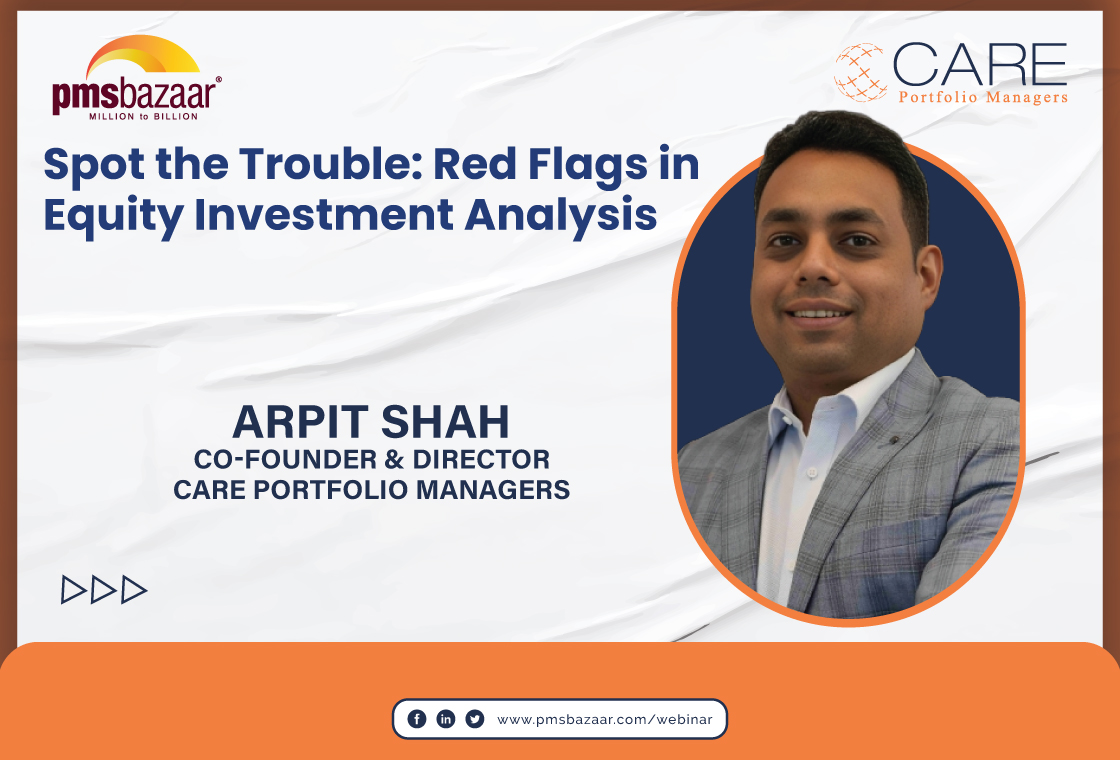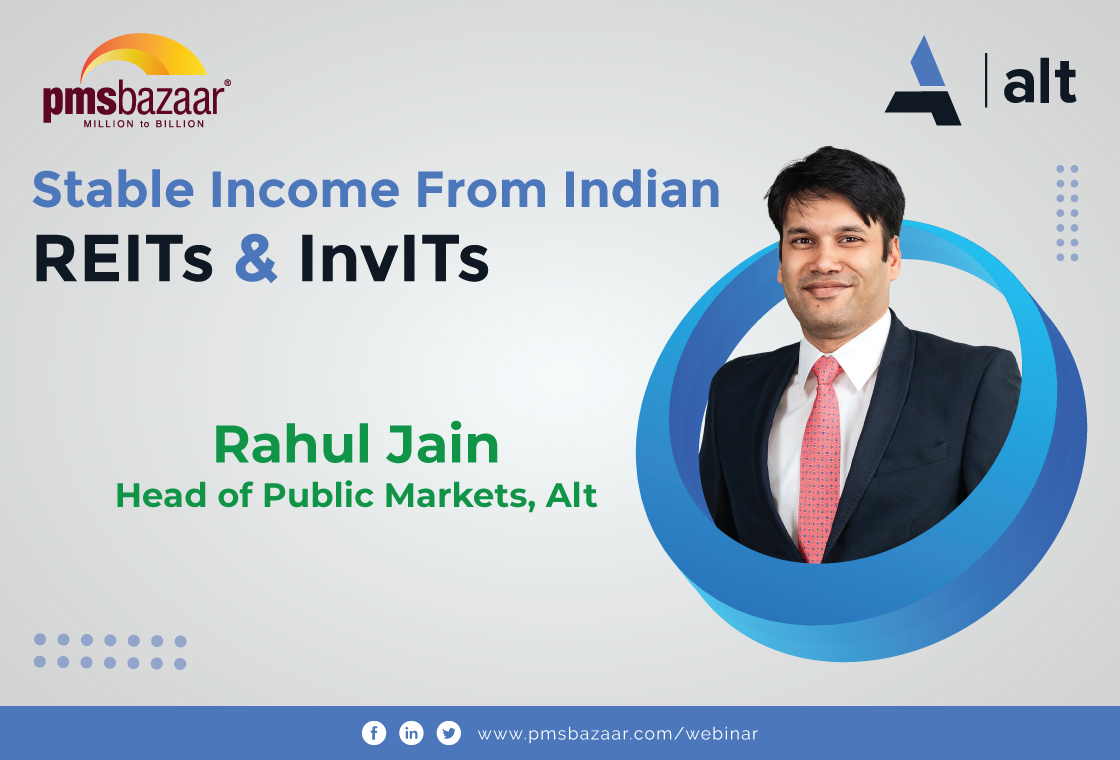Most important value add of long-short portfolios is a superior client experience because of consistency of returns. Long-short portfolios fall between traditional debt and traditional equity in the risk-return spectrum. A common misconception is that leverage is used to amplify risk, whereas in practice long-short funds use leverage to dampen risk by taking short positions. Gain more knowledge from the exclusive article by Mr. Nalin Moniz, CFA, Chief Investment Officer, Alternative Equity and Business Head, Alternative Equity, Edelweiss Asset Management.

Long-short funds are a relatively new addition to the Indian asset management landscape, but they have grown in popularity with an estimated 35 managers having launched long-short Category III AIFs in the past seven years. Prominent players such as Edelweiss, Avendus, DSP, Franklin Templeton, ICICI, IDFC & Tata manage an estimated 12,000 cr in long-short funds. In this article, we explain how the investment flexibility of long-short funds can offer a better client experience than traditional equity portfolios.
Equity mutual funds are increasingly being tethered to well defined boxes by SEBI. This is a sensible move for a mass retail product, where standardization & ease of comparison among peers is important. For example, AMCs are restricted to having a single open-ended offering in each of the 9 traditional active equity and 6 hybrid categories respectively. And the asset allocation of these offerings is tightly controlled with an AMFI defined list of large, mid and small cap stocks. For example, a large cap fund must have at least 80% of its AUM in large cap stocks, which are in turn defined as the top 100 companies by full market capitalization. These tight restrictions along with the adoption of total return indices for bench-marking in 2018 has led to shrinking alpha for mutual fund portfolios. In the last two years, we have seen an extreme polarization of equity performance with a handful of large cap stocks contributing to the entire 7.5% rise in the NIFTY, while the CNX Midcap index has fallen -10.0% in the same period. This cyclical phenomenon has exacerbated the shrinking alpha problem – and even though this will reverse at some point, the structural impediments are still there.
So, is Equity PMS the solution?
Equity PMS’ have a lot more flexibility than mutual funds. They don’t have the same asset allocation constraints or even the requirement to have 65% in equities at all times. This partially solves the stock-picking problem where opportunities don’t come neatly boxed into large, mid & small segments. Unfortunately, equity PMS has a client return problem. While there are several well-managed equity PMS portfolios, there are an equal number of aggressive fund houses that seem to attract client interest at market tops. Client experience across a market cycle is poor because of performance chasing. And this is accentuated by concentrated portfolios, the illiquidity of mid & small caps and a separately managed account platform where inflows continuously buy the same stocks and vice-versa for outflows.
We believe that the flexibility and structure of long-short funds can solve both the shrinking alpha and client experience problems of mutual funds and PMS.
Long-short funds offer fund managers the most investment flexibility. Like PMS, long-short portfolios are not restricted to a particular asset allocation or minimum equity percentage. And they have two further degrees of freedom – shorting and leverage.
India is a stock picker’s market and if it is a stock picker’s market to buy companies that will do well, it must also be a stock picker’s market to short companies that will do poorly. Identifying companies that will do poorly is already part of a mutual fund’s research process, but the constraint of being long-only allows managers to only be underweight these strugglers to the extent of their benchmark weightage.
Leverage for long-short funds is capped at 2x by SEBI’s AIF guidelines. This ability to take exposure greater than 100% through either the use of derivatives or temporary borrowing allows a fund to create hedged portfolios and take advantage of short-term opportunities such as an attractive IPO listing. A common misconception is that leverage is used to amplify risk, whereas in practice long-short funds use leverage to dampen risk by taking short positions. The 2x leverage cap is in line with prudent global standards set by platforms such as UCITs and is far less than what an individual investor can take in her individual capacity.
Perhaps, the most important value add of long-short portfolios is a superior client experience because of consistency of returns. Long-short portfolios fall between traditional debt and traditional equity in the risk-return spectrum – like hybrid mutual funds such as equity savings or balanced advantage funds. As such they have lower volatility and draw downs than traditional equity funds and are less susceptible to performance chasing by advisors and clients. 70% of industry AUM in long-short funds is from individuals and our experience has been that anyone who has 1 crore to invest in an AIF – a successful entrepreneur, a CxO or a family office of a business family – has made their money the hard way and values both capital preservation and growth equally. This is a client segment where moderate but consistent returns without the roller-coaster of traditional equity is valued. And this is where long-short funds can meet an important client need.
Globally, hedge funds are a $3.2 trillion industry and occupy approximately 5% of investors’ portfolios. We anticipate that the local long-short industry will grow approximately 5X from Rs 12,000 cr to Rs 60,000 cr in the next 5 years with a core set of 10-12 credible and large managers who will collectively manage 80% of these assets. The focus is likely to remain equity-oriented strategies but may also expand to include newer asset classes like commodities.
We encourage clients and advisors to give the industry a try – the present set of managers have done well for investors and have the right ingredients to keep delighting investors with strong risk-adjusted returns.

The Views and opinions expressed in this article are those of the authors.The Views and Opinions expressed here do not reflect the view of pmsbazaar.com
Recent Blogs
.jpg)
Passively Active Investing — A Modern Investor’s Lens on ETF-Based PMS
PMS Bazaar recently organized a webinar titled “Passively Active Investing — A Modern Investor’s Lens on ETF-Based PMS,” which featured Mr. Karan Bhatia, Co-Founder and Co-Fund Manager , Pricebridge Honeycomb ETF PMs. This blog covers the important points shared in this insightful webinar.

Spot the Trouble: Red Flags in Equity Investment Analysis
PMS Bazaar recently organized a webinar titled “Spot the Trouble: Red Flags in Equity Investment Analysis,” which featured Mr. Arpit Shah, Co-Founder & Director, Care Portfolio Managers. This blog covers the important points shared in this insightful webinar.

Long-Only AIFs Rebound Sharply in October; Long-Short Strategies Lag Despite Lower Volatility
106 long-only AIFs averaged 3.68% vs 32 long-short AIFs at 2.7%; only 24–31% of funds beat key indices

Markets log strongest monthly gains in 7 months; PMS performance turns near-uniform in October
Nifty 50 TRI gained 4.62%, BSE 500 TRI rose 4.27%; 415 of 427 equity PMSes ended positive

How SMEs are Shaping India’s Investment Landscape?
PMS Bazaar recently organized a webinar titled “How SMEs are Shaping India’s Investment Landscape?” which featured Mr. Shrikant Goyal, Fund Manager, GetFive Opportunity Fund.

Stable Income from Indian REITs and InvITs
PMS Bazaar recently organized a webinar titled “Stable Income from Indian REITs and InvITs,” which featured Mr. Rahul Jain, Head of Public Markets, Alt.

5 Key Considerations Before Investing in AIFs in India
Alternative Investment Funds (AIFs) have emerged as a compelling option for sophisticated investors seeking diversification and potentially superior returns. But venturing into AIFs requires a clear understanding of their unique characteristics that go beyond simply knowing what they are and their categories.

How AIF can help in diversification?
Traditionally, Indian investors have relied on a mix of stocks and bonds to build their wealth. While this approach offers diversification, it can still leave your portfolio vulnerable to market fluctuations. Enter Alternative Investment Funds (AIFs), a dynamic asset class gaining traction for its ability to unlock diversification beyond the realm of conventional options.

